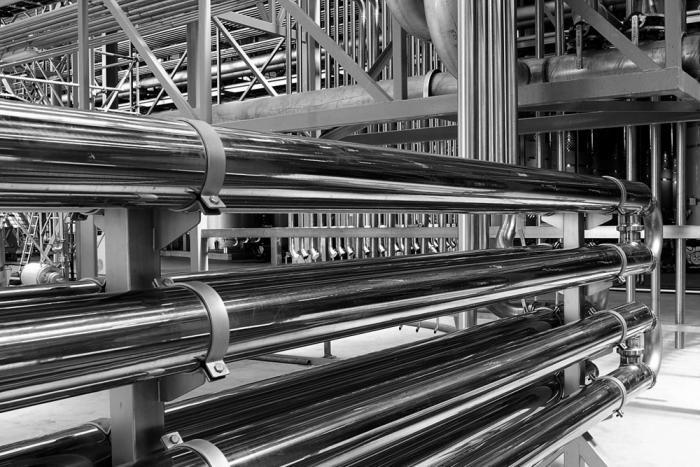Views: 0 Author: Rachel Wynn Publish Time: 2025-06-03 Origin: Site











Stainless steel plate is a foundational material in modern engineering, manufacturing, and infrastructure. Distinguished from thinner stainless steel sheets, stainless steel plates are typically thicker than 6mm and are designed to endure demanding environments that require exceptional strength, corrosion resistance, and heat tolerance. Whether you are fabricating pressure vessels, building offshore platforms, or designing cleanroom components, stainless steel plates offer the structural integrity and reliability that critical industries demand.
| Specification | Details |
|---|---|
| Thickness Range | 6mm – 100mm (can extend to 150mm or more for custom orders) |
| Common Grades | 304/304L, 316/316L, 321, 310S, 904L, Duplex 2205, Super Duplex 2507 |
| Standard Widths | 1000mm, 1219mm (4 ft), 1500mm, 2000mm, custom widths available |
| Standard Lengths | 2438mm (8 ft), 3000mm, 6000mm, or customized to project needs |
| Surface Finishes | No.1 (hot rolled, annealed, pickled), 2B, BA, custom polished (e.g., mirror, brushed) |
| Certifications | EN 10204 3.1/3.2, PED 97/23/EC, ISO 9001, ASTM A240 compliance |
| Manufacturing Standards | ASTM A240, ASTM A480, JIS G4304, EN 10088-2 |
304/304L: Versatile, corrosion-resistant for indoor/outdoor use, excellent weldability.
316/316L: Enhanced corrosion resistance especially in marine and chloride environments.
321: Titanium-stabilized for excellent resistance to intergranular corrosion after welding.
310S: Superior high-temperature strength and oxidation resistance.
Duplex 2205: High strength with superior resistance to pitting and stress corrosion cracking.
Super Duplex 2507: Used in offshore and chemical processing with exceptional corrosion performance.

Corrosion Resistance: Performs well in acidic, alkaline, saltwater, and atmospheric environments.
Strength & Durability: High yield and tensile strength suitable for structural components.
Heat Resistance: Maintains mechanical properties under temperatures up to 1150°C (grade-dependent).
Cleanability: Essential for food-grade, medical, and pharmaceutical applications.
Recyclability: Environmentally sustainable—100% recyclable with no loss in quality.
Stainless steel plates are tailored to meet the functional needs of diverse industries:
| Industry | Applications | Recommended Grades |
|---|---|---|
| Oil & Gas | Pressure vessels, offshore rigs, pipelines | 316L, Duplex 2205, 2507 |
| Shipbuilding | Hull plating, propeller shafts, storage tanks | 316L, 304L, 321 |
| Power Generation | Heat exchangers, boilers, turbines | 310S, 321, Duplex |
| Chemical Processing | Reactors, acid tanks, filter systems | 904L, Duplex 2205 |
| Food & Beverage | Mixing vessels, countertops, ovens | 304, 316L |
| Construction | Bridges, supports, cladding, elevators | 304, 316, 2205 |
| Grade | Yield Strength (MPa) | Tensile Strength (MPa) | Elongation (%) |
|---|---|---|---|
| 304 | 205 | 515 | 40 |
| 316L | 170 | 485 | 40 |
| 321 | 205 | 515 | 40 |
| Duplex 2205 | 450 | 620 | 25 |
| Super Duplex 2507 | 550 | 800 | 25 |
| Grade | Price Range (USD/Metric Ton) | Region Notes |
|---|---|---|
| 304 | $2,400 – $2,800 | Widest availability, lowest price volatility |
| 316L | $3,200 – $3,700 | Marine-grade, premium alloy cost |
| 321 | $3,600 – $4,100 | High-temp performance increases cost |
| Duplex 2205 | $3,800 – $4,500 | Often used in oil & gas, rising demand |
| Super Duplex 2507 | $4,500 – $5,200 | Specialized applications only |

A: Stainless steel plate is generally defined as flat-rolled stainless steel material with a thickness of 6mm or greater. Below 6mm is considered sheet or coil.
A: Oil and gas, shipbuilding, construction, energy generation, food processing, and chemical industries are the top users of stainless steel plates.
A: 304 is general-purpose and cost-effective, while 316 contains molybdenum, making it more corrosion-resistant, especially in saline or acidic environments.
A: Request a Mill Test Certificate (MTC), ensure compliance with international standards (like ASTM A240), and source from reputable suppliers with ISO or PED certifications.
A: Austenitic grades like 304 and 316 are generally non-magnetic. However, cold working or welding can induce slight magnetism. Duplex and ferritic grades may be magnetic.
Stainless steel plates are vital for the strength, longevity, and performance of modern industrial systems. Their ability to resist corrosion, high temperatures, and mechanical stress makes them indispensable across many sectors. Selecting the correct grade, thickness, and finish based on your specific application is essential. Whether you’re designing an offshore rig, processing chemicals, or building structural frames, high-quality stainless steel plates will deliver both safety and efficiency. Always partner with certified suppliers who understand material science and compliance standards to ensure your investment meets both technical and economic expectations.






